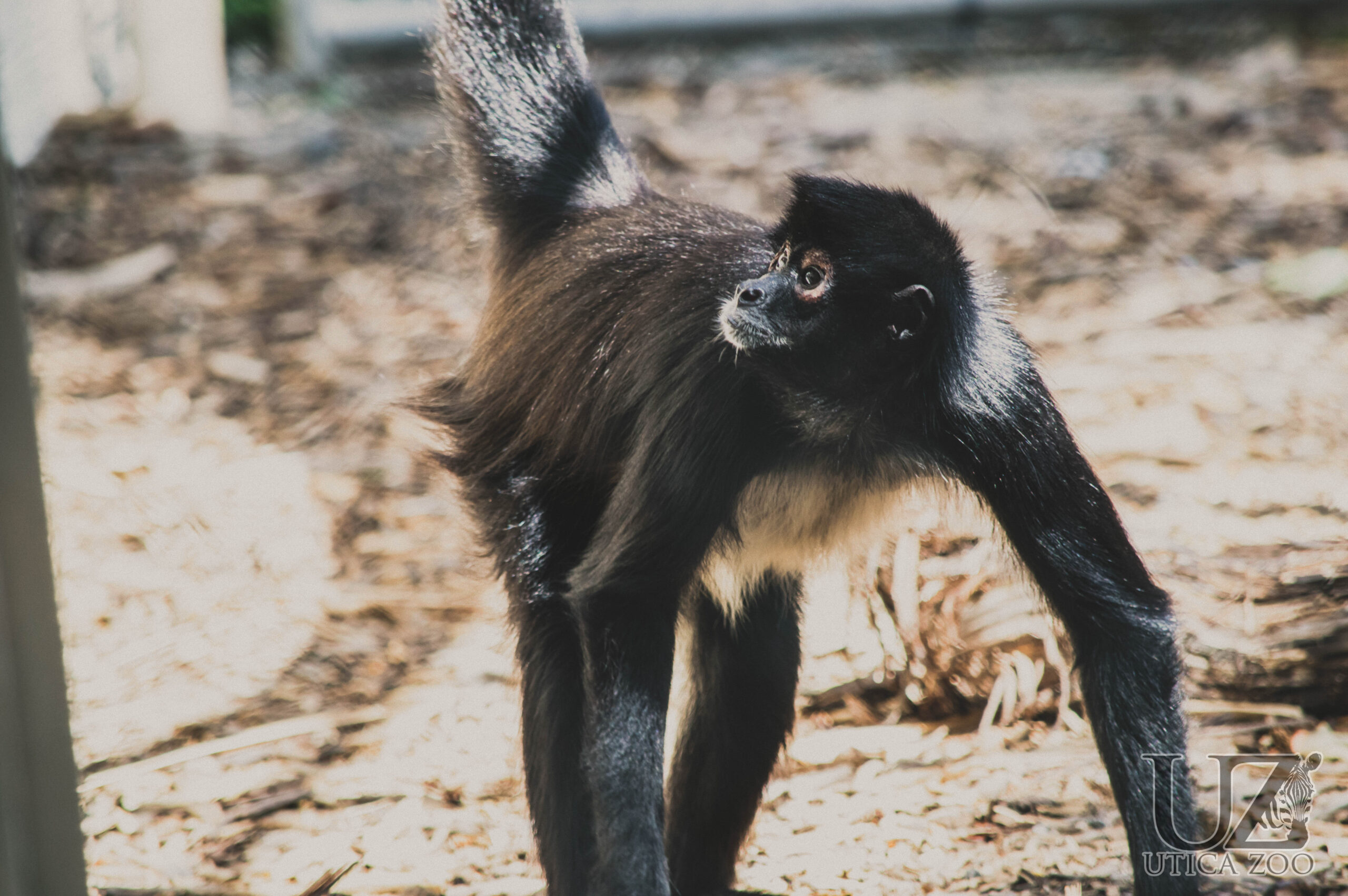Mexican Spider Monkey

Basic Information:
Scientific Name: Ateles geoffroyi vellerosus
Habitat: Mexican Spider Monkeys are located in tropical rainforests stretching across Mexico, Guatemala, Honduras, Belize, and El Salvador.
Diet: Spider Monkeys primarily eat the fleshy fruit that grows on large, rainforest trees.
Size: 2 feet tall / 1 to 2 feet long
Weight: About 13 to 17 pounds
Lifespan: 25.1 years according to AZA Species Survival Statistics
Distribution Map:
I.U.C.N. Conservation Status:

What does this mean?
Endangered – a species determined by the International Union for Conservation of Nature (I.U.C.N.) to possess a very high risk of extinction as a result of rapid population declines of 50 to more than 70 percent over the previous 10 years (or three generations), a current population size of fewer than 250 individuals, or other factors.
Our Spider Monkeys:
Manuel (Male) – Estimated Date of Birth June 1996
Negra (Female) – Estimated Date of Birth December 1996
About Mexican Spider Monkeys:
This very social primate can be found in groups – or troops – scattered across the Central and South American rainforests of Mexico, Guatemala, Honduras, Belize, and El Salvador. During the day, they tend to split up into smaller groups to search for tasty fruits to eat before coming back to their larger, communal group to socialize in the evening. During this socialization they can be found grooming, playing, or – in some circumstances – fighting amongst each other. All of these actions help to define social relations among monkey troops and – in many ways – helps to bring them closer together. Since spider monkeys are arboreal and exist almost entirely in the trees of their native rainforests, the survival of these monkeys is entirely dependent upon the survival of the forests. They require large tracts of primary forest to survive, and are vulnerable to deforestation. They are some-times hunted by humans for meat and captured for the pet trade. Because of low reproductive turnover, they cannot quickly replenish their numbers when affected by these events. As a result, Mexican spider monkeys have completely disappeared from some areas where they were once common.
Did You Know?!
- A spider monkey’s arms are longer than its legs.
- The spider monkey has a prehensile (grasping) tail, which it can use to pick up items as small as sunflower seeds.
- Spider monkeys are quite noisy. They send forth a variety of loud calls which are easy to hear for about 1000m on the ground and 2000m above the canopy. These loud calls and screeches are used to alert members of the troop.
